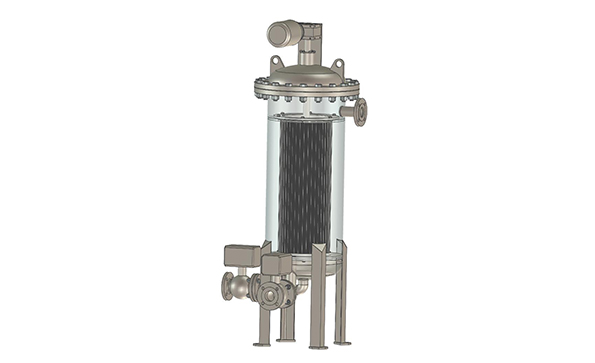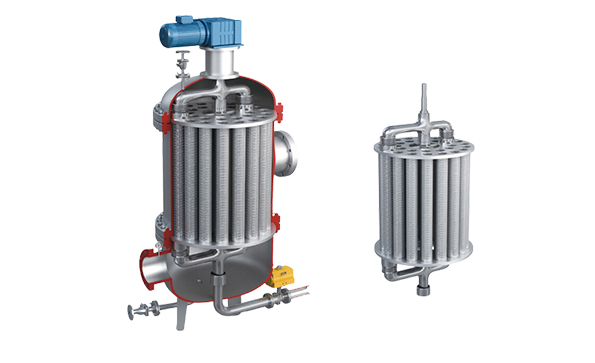The Ultimate Automatic Self-Cleaning Filter Guide: Enhancing Filtration Efficiency
In today's industrial landscape, there is a growing demand for efficient and reliable self-cleaning filters. These filters, also known as industrial self-cleaning filters, automatic self-cleaning filters, or auto-type strainers, are extensively utilized in industrial filtration systems. They serve a crucial role in improving filtration efficiency.
In this blog, we provide you with a comprehensive exploration of self-cleaning filters, presenting the ultimate guide to automatic self-cleaning filters.

A self-cleaning filter operates by utilizing various mechanisms to remove accumulated debris and contaminants from the filter media, ensuring uninterrupted filtration and maintaining optimal performance. The main filtering processes include the Filtration Phase, The build-up of Debris, Cleaning Initiation, Backwash or Cleaning Cycle, Debris Discharge, and Resumption of Filtration.
A detailed explanation of several main filtering processes:
1. Filtration Phase:
The unfiltered fluid enters the filter housing through an inlet.
As the fluid flows through the filter media, contaminants, particles, and debris are trapped on the surface or within the filter media, preventing them from passing through.
2. The build-up of Debris:
Over time, the trapped debris starts accumulating on the filter media, reducing the effectiveness of the filtration process.
The build-up of debris increases pressure differentials across the filter, indicating the need for cleaning.
3. Cleaning Initiation:
Once a pre-determined pressure differential or time interval is reached, the self-cleaning mechanism is activated to initiate the cleaning process.
The specific triggering mechanism can vary, ranging from pressure sensors to automated timers or manual intervention.

This cyclic process allows self-cleaning filters to maintain continuous filtration, reduce downtime for manual cleaning, and ensure efficient performance over extended periods. The frequency and method of cleaning can vary depending on the filter design, application requirements, and the specific self-cleaning mechanism employed.
Auto self-cleaning strainers offer numerous advantages and are applied across diverse industries, including water treatment, oil and gas, chemical processing, food and beverage, and pulp and paper. These strainers are utilized for removing pollutants and impurities, enhancing filtration efficiency, and safeguarding downstream equipment, among other benefits.
Seek advice from a filtration expert at YUBO
No two industrial filtration applications are identical. Whether the fluid is oil or water-based, high or low viscosity, hot or cold, YUBO can help you.
Benefits and Advantages
1. Continuous Filtration: Auto self-cleaning strainers offer continuous filtration without the need for manual intervention or system shutdown. They can maintain consistent filtration efficiency even during the cleaning process, ensuring uninterrupted operation.
2. Reduced Maintenance: The self-cleaning mechanism of these strainers eliminates the need for frequent manual cleaning and maintenance. This reduces downtime and labor costs associated with filter maintenance, resulting in increased productivity.
3. Improved Efficiency: By removing accumulated debris and contaminants, auto-type strainers maintain optimum flow rates and minimize pressure drop across the system. This leads to improved overall efficiency and reduced energy consumption.
4. Longer Filter Lifespan: The self-cleaning feature helps prolong the lifespan of the filter media. By periodically removing accumulated debris, the strainers prevent clogging and maintain filtration effectiveness over an extended period, reducing the need for frequent filter replacements.
5. Versatility: Automatic self-cleaning filters can be designed and customized to meet specific application requirements, including different flow rates, pressure ranges, and filtration levels. They offer flexibility and adaptability to various industrial processes.
Choosing the right self-cleaning strainers requires careful consideration of several factors.
1. Filtration Requirements: Determine the type of contaminants or particles you need to remove from your process fluid.
2. Flow Rate and Pressure: Evaluate the flow rate and pressure requirements of your application. Ensure that the strainer's maximum pressure rating aligns with your system requirements.
3. Filtration Efficiency: Consider the desired filtration efficiency for your application.
4. Self-Cleaning Mechanism: Evaluate the self-cleaning mechanism employed by the strainer.
5. Material Compatibility: Consider the compatibility of the strainer materials with your process fluid.
In addition, there are maintenance, self-cleaning filter manufacturer selection, budget, and other factors to consider.
Click here to learn about Choosing the Right Self-Cleaning Filter: A Comprehensive Guide
Proper installation and regular maintenance are crucial for ensuring the optimal performance and longevity of self-cleaning filters. Here are some general guidelines to follow:
1. Regular Inspection: Schedule routine inspections of the filter to check for any signs of damage, leaks, or abnormal pressure differentials. Inspect the filter housing, seals, gaskets, and internal components.
2. Cleaning Schedule: Follow the manufacturer's recommendations for the cleaning frequency and duration based on your application and process requirements. Regular cleaning helps maintain optimum filtration efficiency.
3. Cleaning Procedures: Adhere to the prescribed cleaning procedures provided by the manufacturer. Follow proper safety guidelines and ensure that the system is shut down or isolated before initiating any cleaning activities.
4. Filter Media Replacement: Replace the filter media according to the manufacturer's guidelines or when the filter's performance is compromised. Consider keeping spare filter media on hand to minimize downtime during media replacement.
By following these installation and maintenance guidelines, you can ensure the reliable operation and longevity of your self-cleaning filter while maximizing its filtration efficiency and minimizing system downtime.
Related Reading: